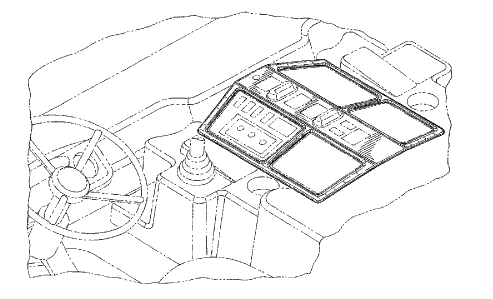I recently wrote on the power of design patents but now they are under attack, at least in one industry. Reps. Darrell Issa (R-CA) and Zoe Lofgren (D-CA) introduced a bill to be known as the PARTS Act to the House on February 2, 2012 and it had a subcommittee hearing on August 1. Gene Quinn of ipwatchdog.com does a good job of connecting the dots from  the witnesses at the subcommittee hearing to vehicle insurance trade groups. The bill would retroactively remove design patent protection for automotive replacement parts. This isn’t about engine components, but rather body panels and interior components that are designed for not just a function but an aesthetic.
the witnesses at the subcommittee hearing to vehicle insurance trade groups. The bill would retroactively remove design patent protection for automotive replacement parts. This isn’t about engine components, but rather body panels and interior components that are designed for not just a function but an aesthetic.
With respect to a design patent that claims a component part of a motor vehicle as originally manufactured —
(A) it shall not be an act of infringement of such design patent to make or offer to sell within the United States, or import into the United States, any article of manufacture that is similar or the same in appearance to the component part that is claimed in such design patent if the purpose of such article of manufacture is for the repair of a motor vehicle so as to restore such vehicle to its appearance as originally manufactured; and
(B) after the expiration of a period of 30 months beginning on the first day on which any such component part is first offered to the public for sale as part of a motor vehicle in any country, it shall not be an act of infringement of such design patent to use or sell within the United States any article of manufacture that is similar or the same in appearance to the component part that is claimed in such design patent if the purpose of such article of manufacture is for the repair of a motor vehicle so as to restore such vehicle to its appearance as originally manufactured.
While these patents can protect the appearance of a particular model, automotive companies and their suppliers also pursue design patents on these components to protect their position in the replacement part market. While they could pursue protection on the entire vehicle appearance, typical body repairs involve only one or two body panels. Accordingly, it’s advantageous to obtain a design patent on each new panel design independent of the others.
Under current law, a design patent may be obtained that will have a 14 year term from the date of issue. That effectively covers the life of many cars. The result of the bill would be a wholesale devaluing (really an elimination of value) for design patents already issued in this area. Replacement parts manufacturers would be able to immediately start producing and marketing exact copies of the OEM panels. Two and a half years after the first offer for sale of a vehicle having the patented part, anyone could sell or use the copies.
While this could conceivably reduce repair costs (a boon to car insurance companies) it will also reduce the return on investments in new vehicle design and body styles. There are pros and cons to the concept of trying to increase competition in a particular market, but immediately devaluing design patents is not the way to promote competition in the area.
Like the SHIELD Act, the PARTS Act targets a specific industry and aims to weaken patents in those industries. It seems that efforts to weaken intellectual property protection in the United States are moving away from comprehensive changes and are instead being applied to specific industries.

